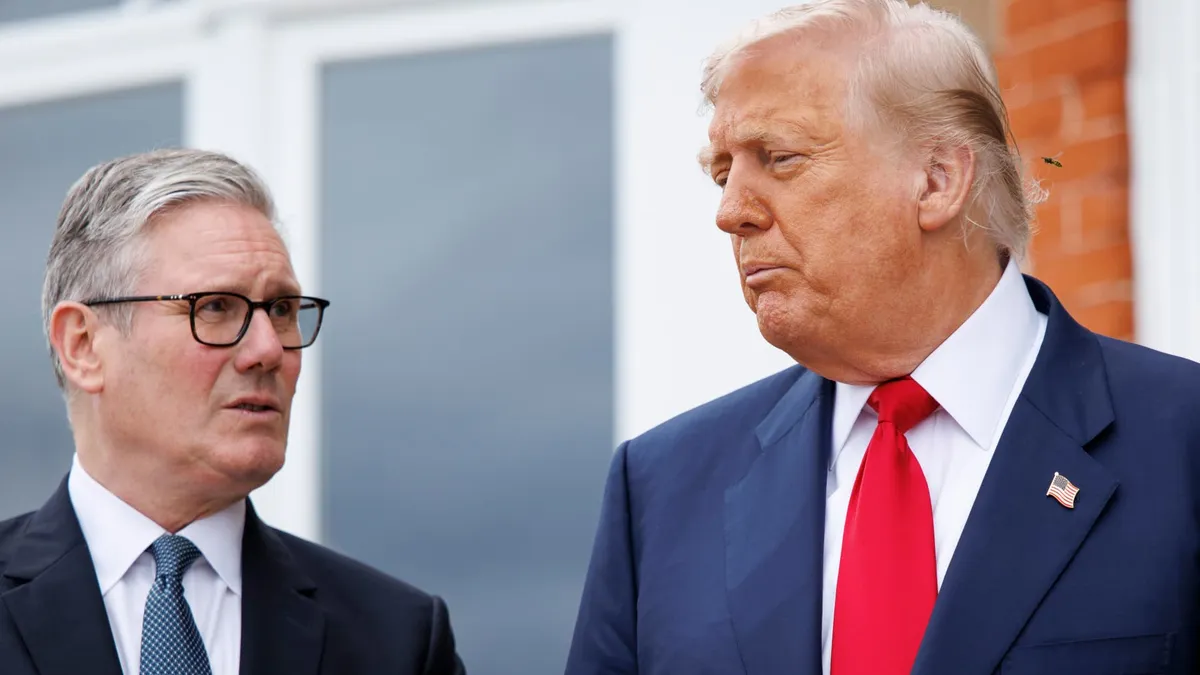
As world leaders and economists across Europe analyze the recent EU-U.S. trade agreement, experts are speculating on its potential impact. According to insights shared with CNBC, while the deal may pose challenges for the European Union, it could inadvertently provide a significant boost to the United Kingdom.
The new trade agreement introduces a 15% tariff rate on goods imported from the EU to the U.S., compared to the 10% tariff rate that the U.K. has negotiated. This difference could position the U.K. advantageously in the international market. Philip Shaw, chief economist at Investec, pointed out that the higher EU tariff could make U.K. exports to the U.S. more appealing, thereby enhancing British trade with American companies. With U.K. goods becoming relatively cheaper, American consumers may lean towards purchasing from Britain over the EU.
Moreover, the lower tariff rate on U.K. goods presents a compelling incentive for EU-based manufacturers to consider relocating some of their operations to the U.K. or expanding existing facilities. Alex Altmann, partner and head of Lubbock Fine LLP's German desk, noted that manufacturers with lower profit margins might find relocating to the U.K. an attractive option to mitigate potential financial pressures. He emphasized that the U.K.'s manufacturing capacity has room for growth, especially following the changes brought about by Brexit.
The benefits for the U.K. extend beyond the favorable tariff rates. The EU successfully negotiating a 15% levy—a significant improvement compared to the 30% tariffs threatened by former U.S. President Donald Trump—could also be seen as beneficial for the U.K. Shaw explained that this outcome allows the EU to avoid a potential economic downturn that could have adversely affected U.K. exports to the EU, thus preserving a vital trading partnership.
However, the extent to which the U.K. will truly benefit from the agreement remains to be seen. Beth McCall, an international trade lawyer at Dentons, highlighted that the new agreement may dilute the potential advantages of the U.K.’s lower tariff rate. If the U.S. had imposed the previously threatened 30% tariffs on EU goods, U.K. goods would have appeared significantly more attractive, she noted. The current 5% tariff difference may still render some U.K. products appealing, but the full impact will take time to materialize as existing contracts expire and U.S. importers seek alternatives.
Questions linger about the timeframe for the effects of these tariffs to be felt globally. Companies have already indicated that these trade duties are likely to impact their earnings, raising concerns over potential repercussions for economic growth. As the finer details of the trade agreements continue to be negotiated, the exact implications remain uncertain. Rising costs for consumers may emerge gradually, complicating the overall economic landscape.
Ultimately, both the U.K. and the EU are navigating a more challenging trade environment. Regardless of whether the tariff rate is set at 10% or 15%, businesses in both regions will contend with significantly higher tariffs when exporting to the U.S. compared to just a few months ago, McCall concluded.